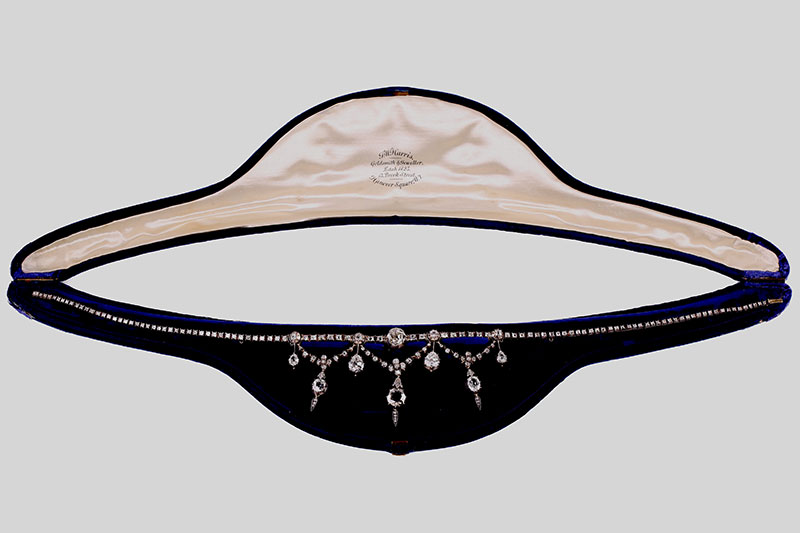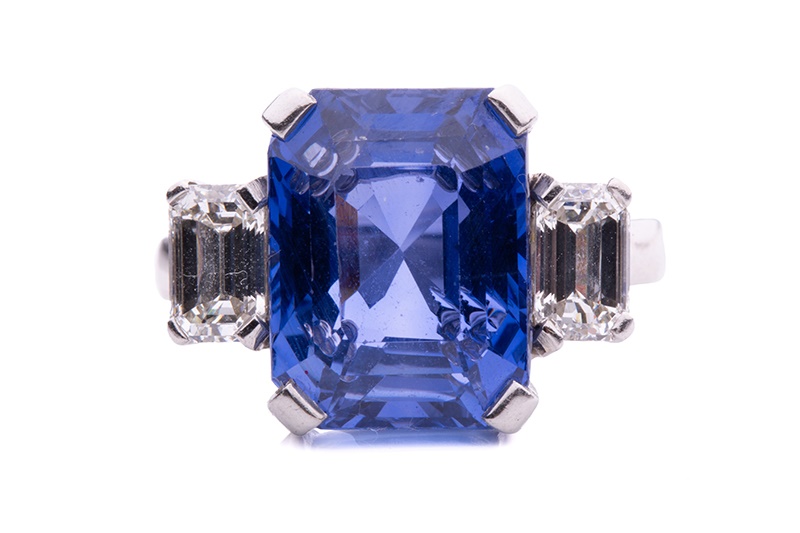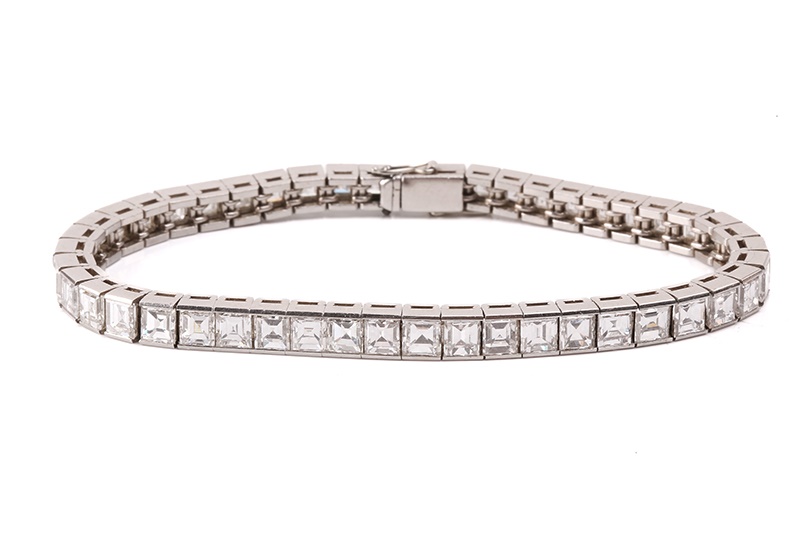How Do I Know if My Jewellery is Valuable?
Useful tips to help you determine if your jewellery collection may just have a significant valuable
24/07/2023
Perhaps you have recently inherited some jewellery? Maybe you are sorting through a costume jewellery box? Or perhaps you are considering downsizing your jewellery collection?
Whilst we would always recommend consulting with an expert jewellery valuer, here we have provided some useful tips to help you determine if your jewellery collection may just have a significant valuable.
 An Important Late Victorian Diamond Garland Necklace
An Important Late Victorian Diamond Garland Necklace
Before you start to examine your jewellery more closely, you might consider cleaning them. We strongly recommend holding off until you have a better idea of what you are looking at…
There are some gemstones that should not be cleaned in warm water, such as emeralds. They are very brittle and often have many inclusions (clarity characteristics), whilst they are also commonly treated with oil, which means that cleaning could potentially damage or ruin pieces like this. Older pieces, such as Georgian items, often have a fine layer of foil applied to the reverse of a gemstone to improve appearance, submerging an item like this in water will absolutely damage the piece and devalue the item, so beware.
A Sapphire and Diamond Trilogy Ring
We recommend using a magnifying glass or jewellers loupe to look for markings; necklaces and bracelets are often hallmarked at the clasp, rings on the inner band, earrings on the back and pendants within the jump ring or reverse. Signatures will provide information about the jeweller/maker while hallmarks will help decipher age, material, and maker of your piece:
Yellow and white gold hallmarks: 18K, 14K, 10K, 750 (18ct), 585 (14ct), 375 (9ct)
Platinum hallmarks: 950, PLATINUM, PLAT
Silver hallmarks: 925, Silver, 800, Sterling
A lack of markings doesn’t necessarily mean your item of jewellery doesn’t have value; years of wear can rub these markings away, indeed some antique pieces won’t have originally had any markings. Look closely at the areas of wear… Does the colour of the metal appear different to that of the rest of the piece? This could be an indication of plating, where a fine layer of gold is applied to a base metal. White gold naturally has a yellow tone, which is why jewellers recommend rhodium plating regularly depending on how often the piece is worn. This could also cause some areas of wear to appear different in colour. Note that gold and silver are not magnetic, so, passing a very strong magnet over any jewellery in question will attract that item if it is not a precious metal.
Look closely at the setting, elaborate and intricate prongs can be clues to the value. Fine gemstones will have been carefully secured into place, and if stones appear to be glued into place, it is unlikely that the item is valuable – but not impossible. The cut, colour and appearance of stones can offer invaluable information, even to the untrained eye. Gemstones with lots of scratches, chips, or fractures, are possibly imitations. Areas of colour zoning – where the colour appears brighter in some areas than others – could indicate a natural gem. An uneven shape or cut of a white stone could indicate an older cut diamond – using a white light you can observe the fire and brilliance, although this can be tricky for an untrained eye. With a strand of pearls, you can very carefully rub one pearl against another, if they are smooth against each other – it is likely they are imitation. Cultured or natural pearls will feel grainy against each other – imagine grinding your teeth, this would be a similar effect.
read more:
How Can You Tell if Jewellery is Vintage?
Are Jewellery Valuations Free?
Will Diamonds Increase in Value?

Nicky Houston
Our Head of Jewellery, Watches & Silver... Nicky is a highly respected Auctioneer & Valuer, who had dreams of becoming an artist. Whilst she may not have made it as a successful artist herself, Nicky has helped many a customer to successfully sell and buy beautiful pieces of jewellery and works of art over her many years working within the auction industry.
Jewellery Silver & Objects of Virtue Watches
Do you have any jewellery that you believe might be valuable?
Our friendly team here at Dawsons would be delighted to help accurately determine the value.
Please do get in touch today: 0207 431 9445 / info@dawsonsauctions.co.uk

